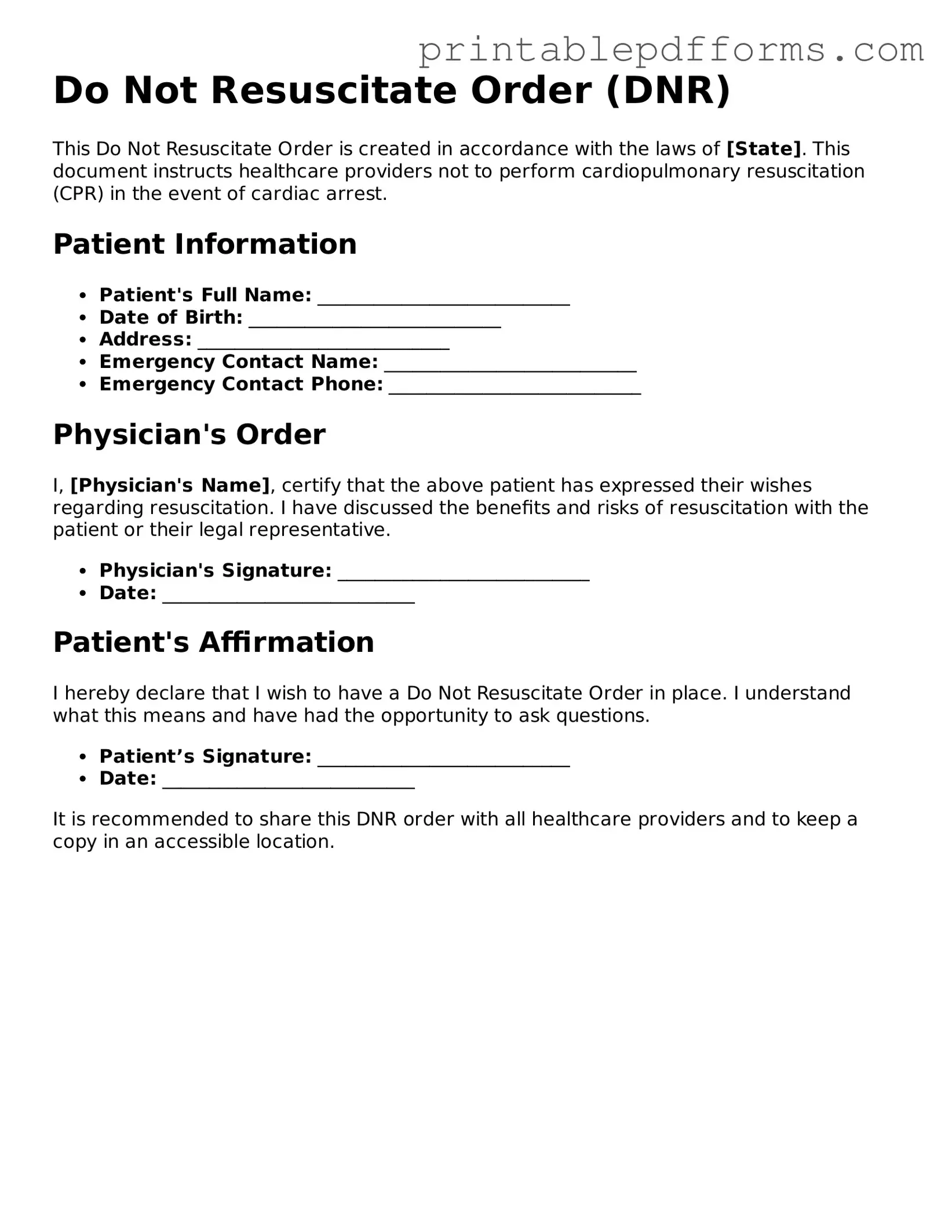Blank Do Not Resuscitate Order Form
A Do Not Resuscitate (DNR) Order is a legal document that allows individuals to refuse certain medical interventions, specifically cardiopulmonary resuscitation (CPR), in the event of cardiac or respiratory arrest. This form ensures that a person's wishes regarding end-of-life care are respected by healthcare providers. Understanding the implications and procedures for completing a DNR Order is essential for anyone considering this important decision.
Ready to take the next step? Fill out the DNR Order form by clicking the button below.
Create This Document Online
